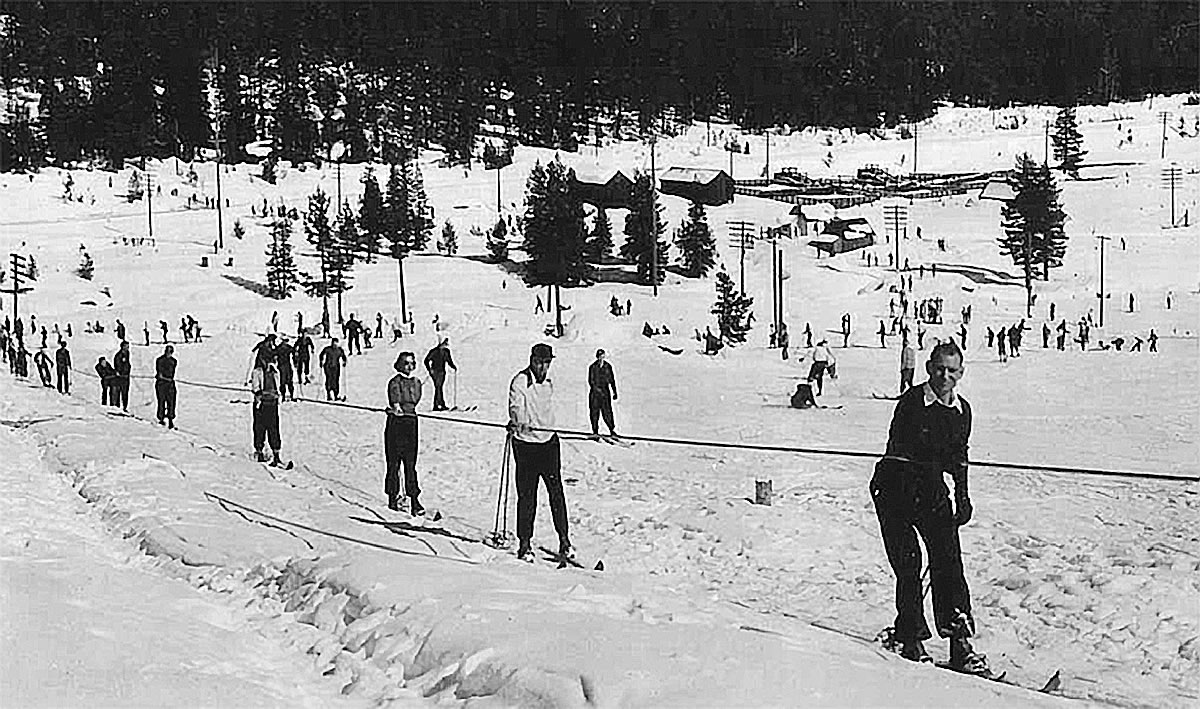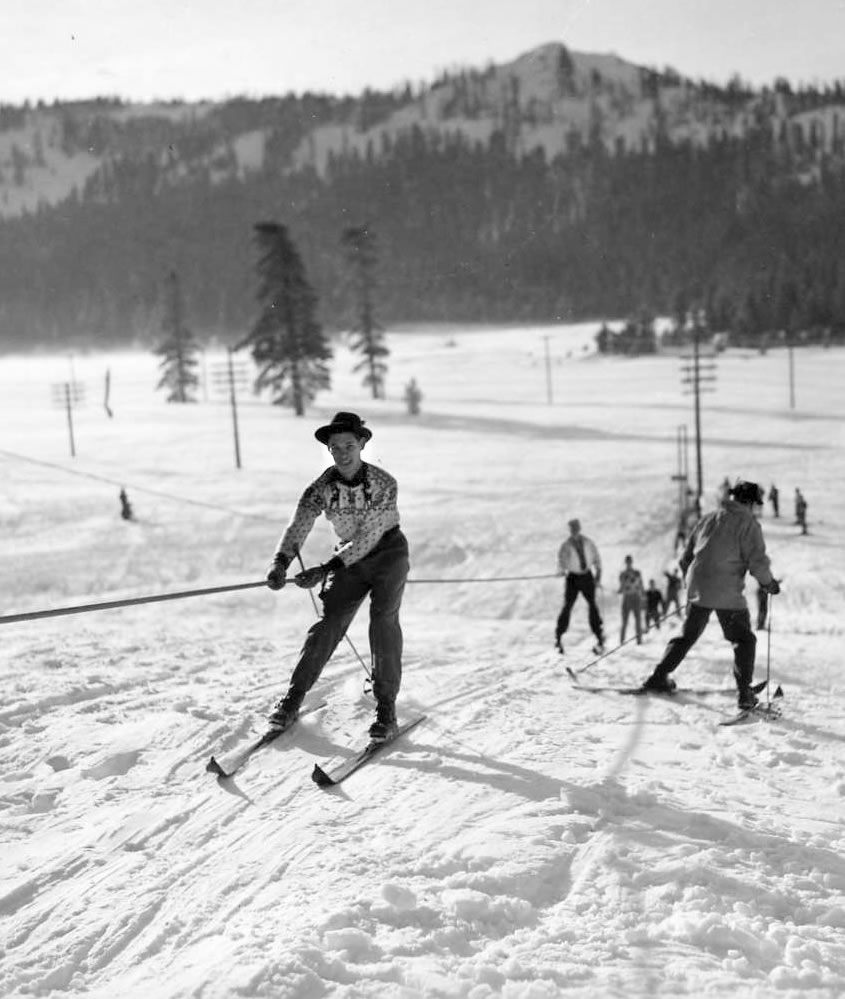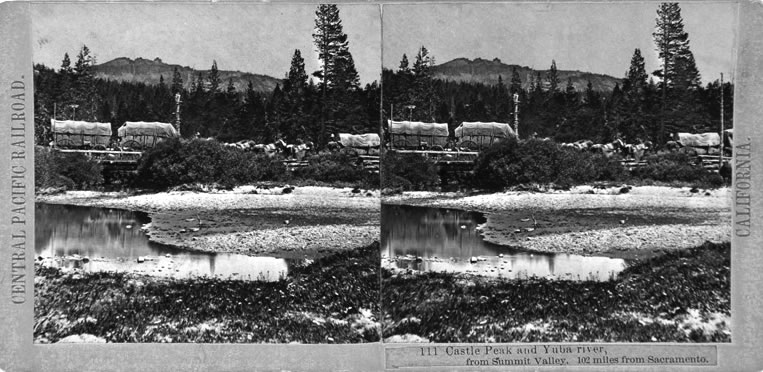Donner Summit- Extraordinary
Donner Summit or Donner Pass is extraordinarily rich and historically it is the most important location in California and perhaps the entire Western United States.
Recreational opportunities abound: rock climbing, downhill skiing, road biking, snowboarding, mountain biking, hiking, lepidoptery, photography, bird watching, plein-air painting, and cross-country skiing.
The area is amazingly diverse biologically. There are over a hundred species of birds that visit Donner Summit. There are 115 species of butterflies, 16 species of amphibians, 500 species of plants, and many dozens of species of mammals. Some of those species are “special Status.”
Donner Summit is the Sierra Divide and the source of three major rivers: the Truckee, the Yuba, and The American.
It is the history that really sets the area apart. Native Americans have been traversing Donner Pass and Summit Valley (Van Norden) for thousands of years. They came to spend their summers away from the Nevada heat and to trade with California Indians. In Summit Valley there are over a dozen mortar sites, some with many mortars. The Native Americans ground the mortars into the Sierra granite over many generations as they ground their seeds. There are many metates (larger grinding surfaces) scattered around as well. In one location there are also cupules (small depressions ground into the granite possibly for mystical reasons). Petroglyphs, which are thousands of years old, are in many locations.
The first wagons to reach California came through Summit Valley after the emigrants had conquered the hardest obstacle on their journey: the Sierra and Donner Pass. The first transcontinental railroad goes through Summit Valley as does the first transcontinental highway and the first transcontinental telephone line. Overhead, the first transcontinental air route crossed the Summit, the route marked by beacons on the surrounding peaks. Soda Springs Ski Hill is called Beacon Hill because a beacon was located there.
In Summit Valley there is a piece of the Dutch Flat Wagon Rd. that was hidden for almost a hundred years by Lake Van Norden. There is also a beautiful remnant of the Emigrant Trail as it winds through the forest on the edge of the meadow.
The Coming of Modern Skiing
 Before skiing became a popular participant sport it was mostly for spectators. People came to the slopes to watch ski races and ski jumping.
Before skiing became a popular participant sport it was mostly for spectators. People came to the slopes to watch ski races and ski jumping.
A few visionaries though, had a different idea. Skiing could become a participant sport too. They imported ski instructors from Europe, improved ski technique and instruction, improved equipment, ski lifts, and built lodges and small ski areas.
At first skiers arrived by train. There were train stations at Soda Springs and Norden here on Donner Summit. The station at Norden was actually in the snowsheds and there was a restaurant and ski rental inside.
In 1931 one of the “visionaries,” Wendell Robie of the Auburn Ski Club, organized a ski jumping and slalom event. He invited the State legislature. Along with the legislature 4,000 automobiles and their occupants crowded the highway up to Cisco Grove. That convinced the legislature that snow sports were popular and the road needed to be plowed. Highway 40 became a winter highway as well as a summer highway.
 All along Old Highway 40, which runs right past the windows here, there were small “Mom and Pop” ski areas each with a rope tow or two and lodges where people could stay.
All along Old Highway 40, which runs right past the windows here, there were small “Mom and Pop” ski areas each with a rope tow or two and lodges where people could stay.
People came by the thousands to ski at the many ski areas on Donner Summit and leading up to Donner Summit.
Pictured here: the rope tow at Beacon Hill, now Soda Springs Ski Are
Dutch Flat Donner Lake Wagon Rd.
The first wagon trains took a detour before they reached the site of this restaurant. They went across Summit Valley and then up Soda Springs Rd. to what is now Serene Lakes before heading downhill to California.
With the coming of the railroad though, a major wagon route came right past here. It was the Dutch Flat Donner Lake Wagon Rd. It was built by the railroad from 1862 to 1864 and was used as a toll road for freighters and a supply road for the railroad.
 As the railroad building progressed across the Sierra “end of track” moved uphill. Wherever end of track was a town would grow up and there would be stage and freight service for the rest of the trip over the Sierra. Small hotels were built all along the route, including a couple on Donner Summit.
As the railroad building progressed across the Sierra “end of track” moved uphill. Wherever end of track was a town would grow up and there would be stage and freight service for the rest of the trip over the Sierra. Small hotels were built all along the route, including a couple on Donner Summit.
The railroad marketed the new road as a big improvement over the Placerville Rd. over the Sierra and the road saw very heavy usage. In 1867 58 train car loads of freight a day were unloaded at Cisco onto freight wagons to travel over the Summit pm tje Dutch Flat Rd.t.
By the time the railroad was complete almost all freight switched to the railroad. The Dutch Flat Rd. fell into disuse and the hotels were abandoned.
Stampeding Oxen, Blindfoled Mules
There were some interesting sights on the road. For example, the locomotive Sacramento was hauled on wagons from Gold Run to the Summit to work as donkey engine over the central shaft of the summit Tunnel #6 in 1867.
![]() “Missouri Bill” hitched 10 yoke of oxen (20 oxen) to his logging wagon which had two foot wide wheels so it would not sink into the mud. The huge wagon load was such a scary sight to oncoming traffic that is caused a one stampede and “raised hell on the trail.” “There was trouble every day” and “stage horses would balk at the sight of her.” Eventually oncoming teamsters blindfolded their mules so they would not run off when they saw the engine coming. It took six weeks for the locomotive to come from Sacramento to Donner Summit.
“Missouri Bill” hitched 10 yoke of oxen (20 oxen) to his logging wagon which had two foot wide wheels so it would not sink into the mud. The huge wagon load was such a scary sight to oncoming traffic that is caused a one stampede and “raised hell on the trail.” “There was trouble every day” and “stage horses would balk at the sight of her.” Eventually oncoming teamsters blindfolded their mules so they would not run off when they saw the engine coming. It took six weeks for the locomotive to come from Sacramento to Donner Summit.
Later in 1867, during the winter, a whole locomotive, forty miles of track, and parts for railroad cars were taken over the Summit on the road – in the middle of winter. Oxen wore “shoes” so they would not sink too far into the snow.
You had to be tough to live in those days.
In the old days when there were not televisions, video game consoles, MP3 players, etc. people got enjoyment by passing around stereopticon viewers like the one above. The double pictures, like the one to the left and the one in the viwer here, were 3D!
With these viewers people could experience the wonders of the world before the internet. The slide in the stereopticon above shows a view through the snowsheds to the front door of the old Summit Hotel which sat at the Summit on the railroad route.
The First Ski Lifts
 In the old days avid skiers would make only a few runs to the top of a hill in a day. They could only make as many runs as they had energy to climb the hills.
In the old days avid skiers would make only a few runs to the top of a hill in a day. They could only make as many runs as they had energy to climb the hills.
Ski promoters knew that in order for skiing to become popular there had to be a better way of getting skies to the top so they could ski down.
There were many experiments and eventually ski areas settled on rope tows intially powered by automobile engines. For example, Johnny Ellis had three rope tows as Lake Mary and what is now Donner Ski Ranch, one powered by a Model A automobile.
Other things were tried though on the way to rope tows. One as the Up Ski or Boat Tow. Dennis Jones built on at Beacon Hill (now Soda Springs Ski Area). It consisted of two sleds, one of which you can see below.
Skiers would removed their skis and sit down facing backwards and be pulled up the hill. As one sled ascended the other descended.
It was not convenient for skiers and did not survive. One last piece still sits at Cisco Grove on the hillside overlooking the freeway (below).

The Auburn Ski Club had a boat sled at Cisco Grove. Some time in the 1930’s it was abandoned in favor of a rope tow and one of the sleds still sits on the mountain above the freeway as you can see here.
Rope tows eventually gave way to chair lifts. The first chair lift in California was built at Sugar Bowl. It was a single seater. Those singled seaters gave way to doubles and finally, to high speed quads and even bigger lifts.

